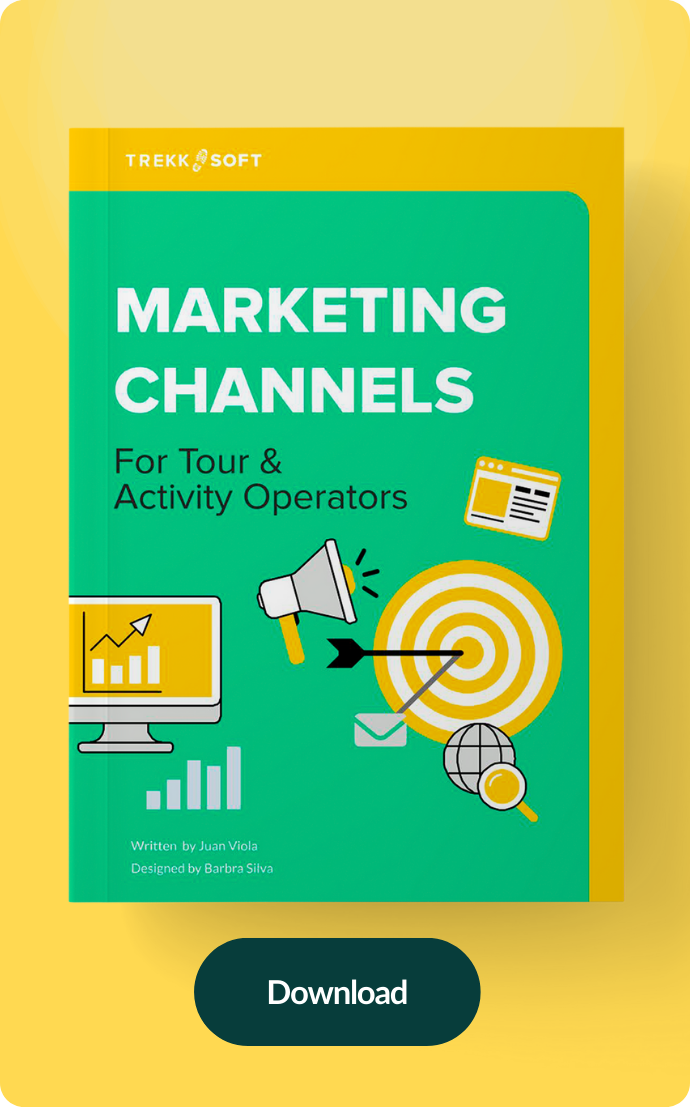Did you know that travellers consult an average of 141 travel-related pages before making a booking? This presents a significant opportunity for your travel businesses to capture your audience attention. However, it also introduces a unique challenge: with so much information readily available, how can you ensure that your website is the one that gets travellers to book?
Every click, view and interaction can influence a traveller's decision, so it is crucial to understand and optimise your website's conversion. This article will explore conversion tracking, with a focus on integrating Google Analytics 4 (GA4) with our Booking Engine. This will provide a comprehensive understanding of your booking process and enable you to enhance every part of the traveller's journey.
Understanding conversion tracking for your tour business
Conversion tracking is the process of determining when a visitor browsing your website decides to book a tour or purchase a product. It is about identifying the moment someone goes from merely looking around to taking action.
The key benefit of conversion tracking is that it allows you to see your conversion rate, or how effective your website is at turning visitors into paying customers. In our industry, a typical website might convert about 4% of its visitors into customers.
The first step in determining your site's conversion rate is to calculate it. This is a simple process:
Conversion rate = (number of bookings / number of website visitors) × 100
For instance, if your site gets 5,000 visitors in a month and 250 of them book a tour, your conversion rate would be 5%.
But getting to that booking is a journey. Here’s a step-by-step example to show how it looks for a typical tour or activity operator website:

This step-by-step process is known as funnel analysis. It involves observing the path that visitors take on your site, from first contact to booking. By analysing this journey (or “funnel”), you can identify where you’re losing potential customers and determine how to retain them on the path to booking.
The specific parts of the funnel you focus on should align with your business goals. You may choose to analyse detailed data for each step or concentrate on overall performance.
There are several key components to consider during your analysis:
- Landing pages: Check how visitors are entering your site.
- Trip / experience pages: Gauge visitor interest in what you're offering.
- Booking process: Look for points where visitors might abandon their booking.
It is important to determine the level of detail required in your analysis, distinguish between factors that can be influenced and those that cannot, and identify potential variables for testing. This helps you to identify which parts of the customer journey are critical to measure and to develop strategies that are efficient in improving your performance.
For example, at TrekkSoft, we track the conversion rates of our customers who use our Booking Engine. Our objective is twofold: 1) to evaluate the effectiveness of our widget and identify areas for improvement; 2) to provide this data to customers on request. Our analysis therefore spans from the initial interaction with the Booking Engine to the final confirmation of the booking.
Integrating GA4 with our Booking Engine

GA4 offers funnel exploration, which allows you to get detailed information about user behaviour at each stage of the booking process.
If you are interested in starting to track your conversions with GA4 by integrating information from the Booking Widget, we have a complete guide to implementing GA4 for conversion tracking, check it out here.
This guide delves into setting up a funnel to analyse customer interactions and optimise the booking process. It also provides detailed instructions on setup to ensure you are fully equipped to harness the analytical power of GA4.
How can funnel exploration help you optimise conversions?
Here are some ways in which funnel analysis data can help you:
Identifying bottlenecks
Start by identifying where users frequently abandon the checkout process. For instance, if you observe a pattern of cart abandonment at the checkout stage, it may be beneficial to streamline the checkout process or expand your payment options. This type of information enables you to minimise potential losses at the most critical stage.
Improve user experience
Regularly monitor which pages have high abandonment rates, an indicator of potential user frustration. With this data, you can improve page design, simplify navigation or enrich content to make the user journey smoother and more engaging.
Personalise marketing actions
Tailor your marketing strategies using accurate customer data. For instance, if a specific demographic is prone to dropping out at registration, personalise communications to address their concerns or offer incentives to retain their engagement.
Set and measure targets
Set realistic conversion benchmarks and targets based on historical data and industry standards. Monitoring these targets on a regular basis will allow you to continually evaluate and refine your strategy in order to improve results.
Improve customer service
On occasion, users may require additional assistance at an intermediate stage. Identify these critical stages using your data, and enhance customer support by implementing tools such as live chat or comprehensive FAQs to assist them in completing their journey.
Final thoughts
Attracting traffic to your website is just the beginning. The real test — and, indeed, the real opportunity — is turning that traffic into meaningful results.
Measurement and optimization are the foundation for continuous improvement and growth of your tour and activity business. By knowing and improving your conversion rates, you ensure that every ounce of effort counts, aligning directly with your goals and driving your brand forward.
If you're ready to take the next step, our e-book on conversion optimization is your go-to guide. It's a practical companion full of actionable insights, tailored to help you elevate your digital strategy.




